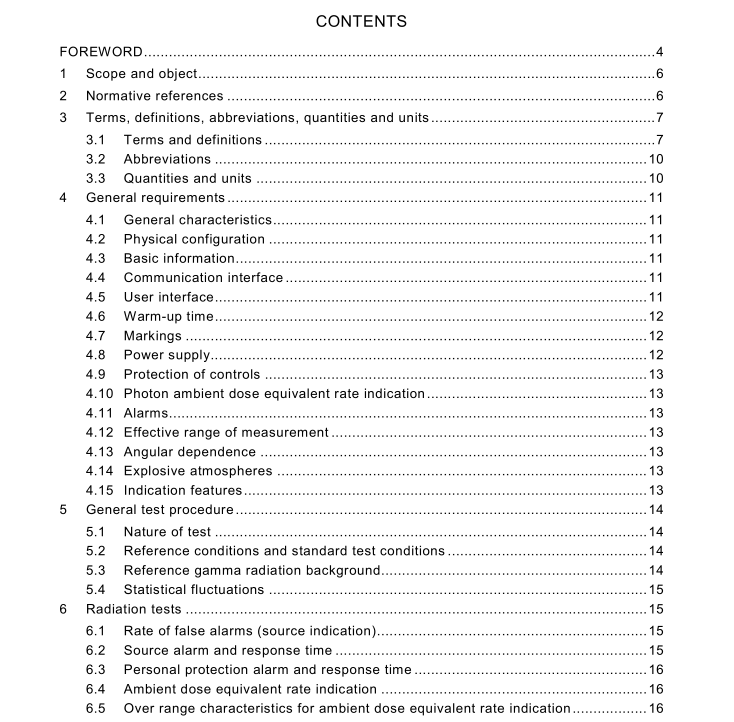IEC 62533:2010 pdf free download Radiation protection instrumentation – Highly sensitive hand-held instruments for photon detection of radioactive material
1 Scope and object
This International Standard applies to hand-held instruments used for the detection and localization of radioactive photon emitting materials. These instruments are highly sensitive meaning that they are designed to detect slight variations in the range of usual photon background caused mainly by illicit trafficking or inadvertent movement of radioactive material. Compared to pocket devices (see IEC 62401 ), this highly sensitive instrument allows the scanning of larger volume items such as vehicles or containers. They may also be used in fixed or temporarily fixed unattended mode to monitor check points or critical areas.
These instruments also provide an indication of the ambient dose equivalent rate from photon radiation. However, this standard does not apply to the performance of radiation protection instrumentation which is covered in IEC 60846-1 and IEC 61 526. These instruments may provide additional functions as described below without including all features of specialized portable identification devices as defined by IEC 62327:
• rejecting natural background variation encountered when used in movement;
• sorting alarms of interest from naturally occurring radioactive material (NORM) or medical radionuclides originated alarms;
• provide source categorization data (including limited photon spectra) to a remote location.
The object of this standard is to establish performance requirements including physical characteristics, general test conditions, radiation characteristics, electrical safety, and environmental conditions. This standard provides examples of acceptable test methods to determine if an instrument meets the requirements of this standard. The results of tests performed provide information to users on the capability of radiation detection instruments for reliably detecting photon sources.
Obtaining operating performance that meets or exceeds the specifications as stated in this standard depends upon properly establishing appropriate operating parameters, maintaining calibration, implementing a suitable response testing and maintenance program, providing proper training for operating personnel and developing operating procedures that address the instrument limitations and capabilities.
2 Normative references
The following referenced documents are indispensable for the application of this document. For dated references, only the edition cited applies. For undated references, the latest edition of the referenced document (including any amendments) applies.
IEC 60050-393:2003, International Electrotechnical Vocabulary (IEV) – Part 393: Nuclear instrumentation – Physical phenomena and basic concepts
IEC 60050-394:2007, International Electrotechnical Vocabulary (IEV) – Part 394: Nuclear Instrumentation – Instruments, systems, equipment and detectors
IEC 60068-2-75:1 997, Environmental testing – Part 2-75: Tests – Test Eh: Hammer tests
3 Terms, definitions, abbreviations, quantities and units
3.1 Terms and definitions
For the purposes of this document, the following terms and definitions, as well as those given in IEC 60050-393 and IEC 60050-394 apply.
3.1.1
A-weighted sound level
the frequency weighting of an acoustic spectrum according to a standardized frequency response curve based on the frequency response of the human ear
IEC 62533:2010 pdf free download
